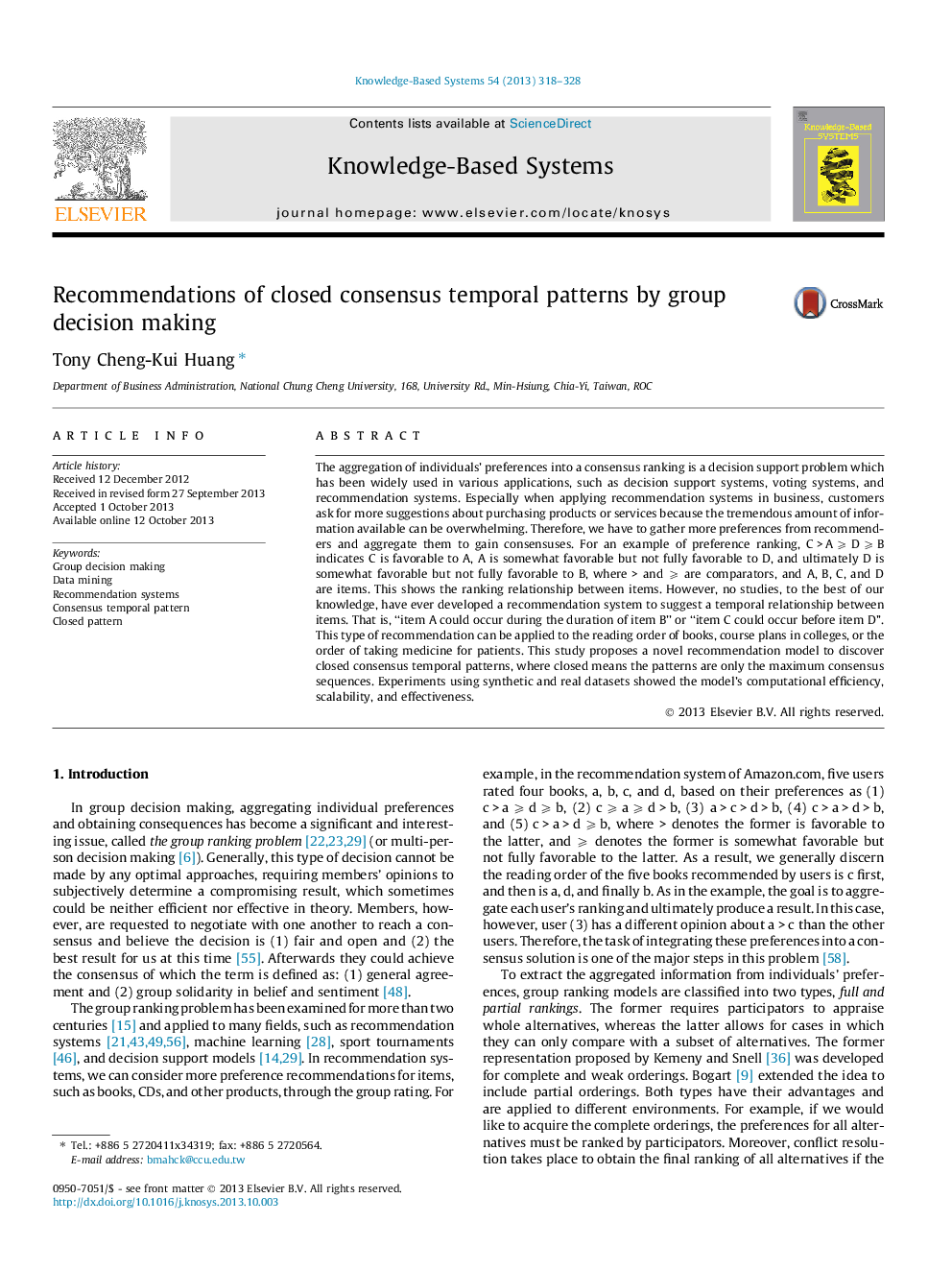| Article ID | Journal | Published Year | Pages | File Type |
|---|---|---|---|---|
| 6862769 | Knowledge-Based Systems | 2013 | 11 Pages |
Abstract
The aggregation of individuals' preferences into a consensus ranking is a decision support problem which has been widely used in various applications, such as decision support systems, voting systems, and recommendation systems. Especially when applying recommendation systems in business, customers ask for more suggestions about purchasing products or services because the tremendous amount of information available can be overwhelming. Therefore, we have to gather more preferences from recommenders and aggregate them to gain consensuses. For an example of preference ranking, C > A ⩾ D ⩾ B indicates C is favorable to A, A is somewhat favorable but not fully favorable to D, and ultimately D is somewhat favorable but not fully favorable to B, where > and ⩾ are comparators, and A, B, C, and D are items. This shows the ranking relationship between items. However, no studies, to the best of our knowledge, have ever developed a recommendation system to suggest a temporal relationship between items. That is, “item A could occur during the duration of item B” or “item C could occur before item D”. This type of recommendation can be applied to the reading order of books, course plans in colleges, or the order of taking medicine for patients. This study proposes a novel recommendation model to discover closed consensus temporal patterns, where closed means the patterns are only the maximum consensus sequences. Experiments using synthetic and real datasets showed the model's computational efficiency, scalability, and effectiveness.
Related Topics
Physical Sciences and Engineering
Computer Science
Artificial Intelligence
Authors
Tony Cheng-Kui Huang,
